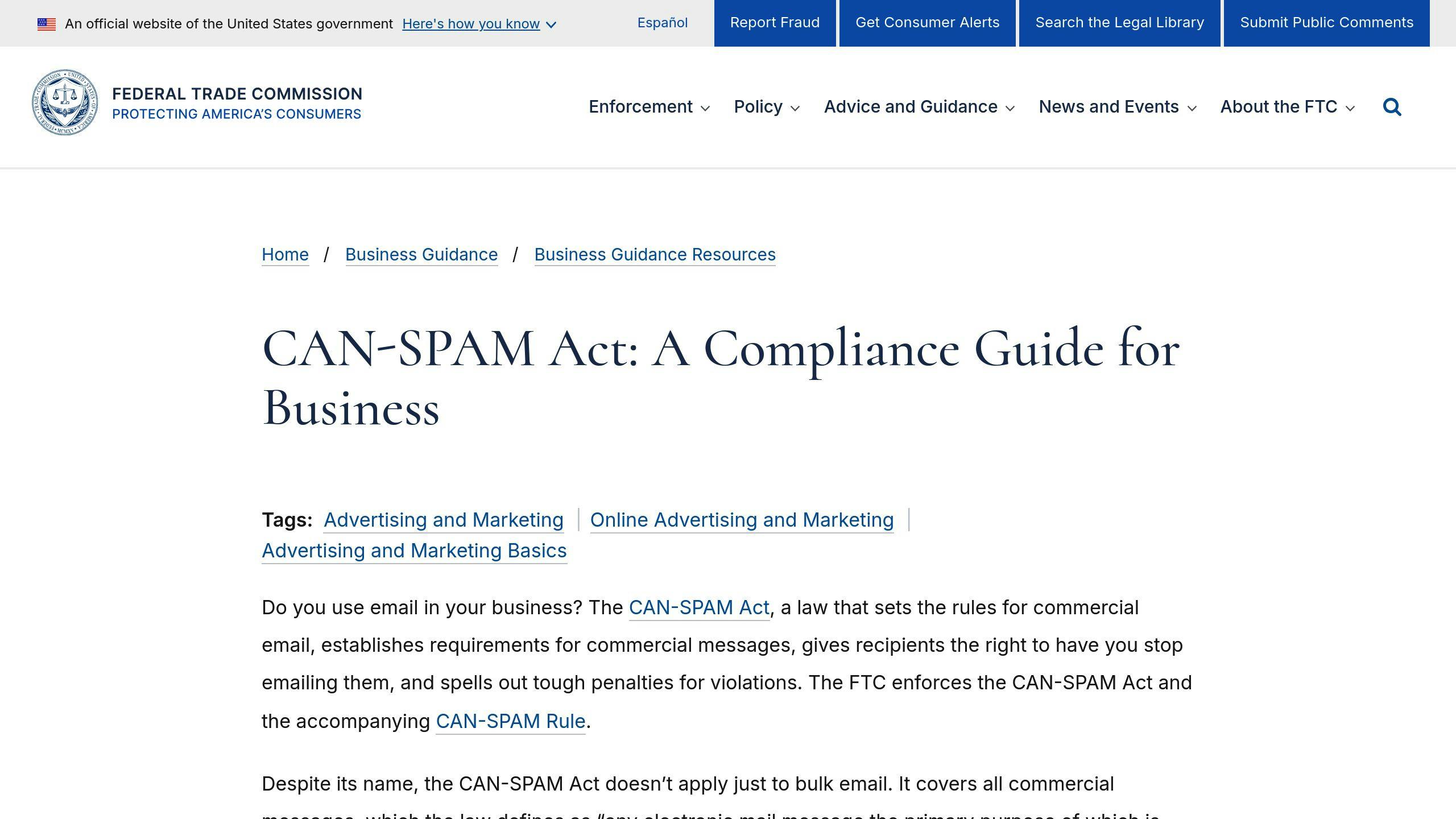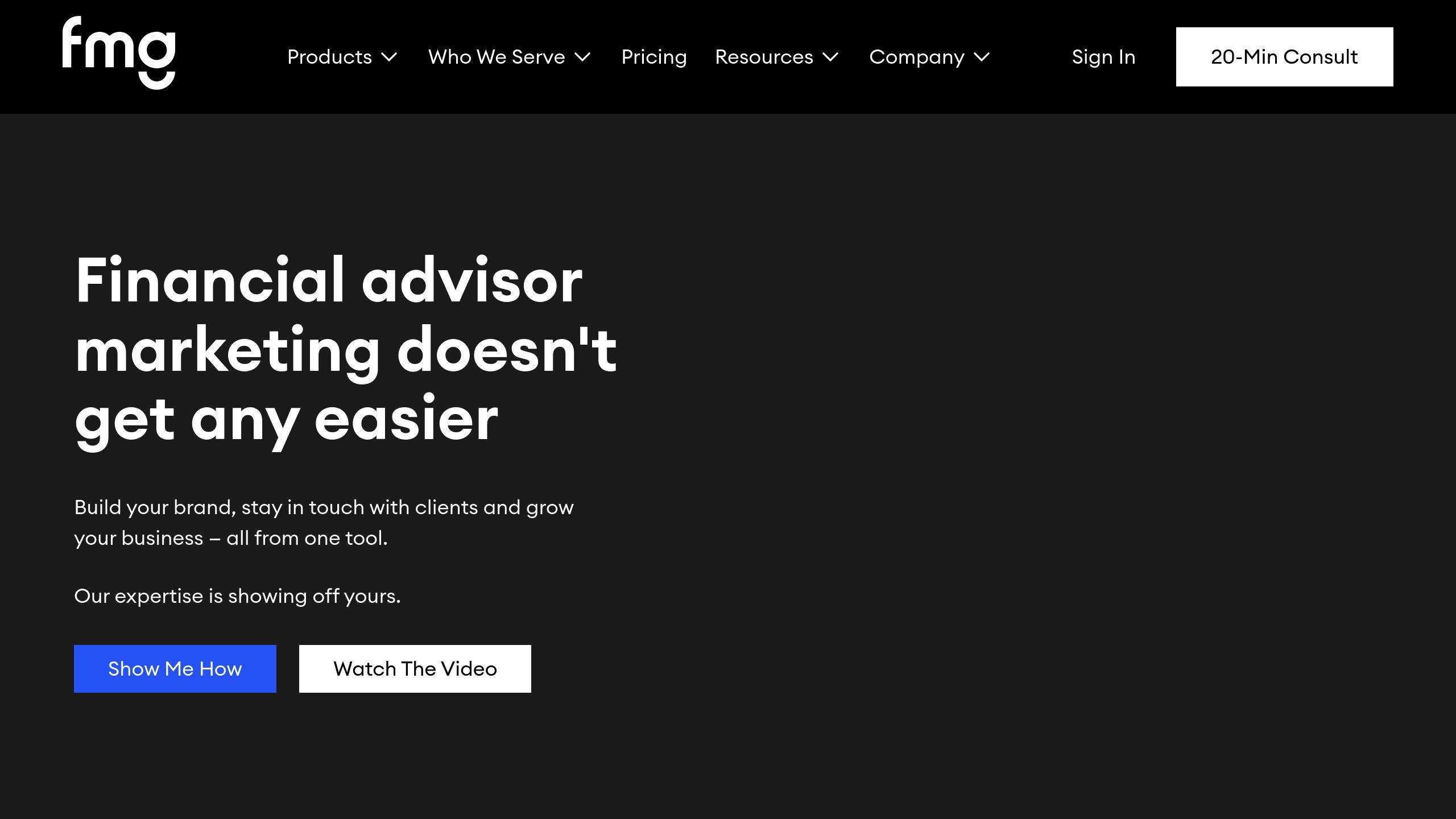Email segmentation laws are crucial for financial advisors to ensure compliance, protect client data, and maintain trust. Ignoring regulations like GDPR, CCPA, and the CAN-SPAM Act can result in hefty fines and reputational damage. Here’s what you need to know:
- GDPR: Requires explicit consent, transparency in data use, and secure storage for EU residents.
- CCPA: Mandates disclosing data usage and honoring opt-out requests for California consumers.
- CAN-SPAM Act: Enforces accurate headers, honest subject lines, and clear opt-out options, with fines up to $51,744 per violation.
- SEC Rules: Financial advisors must maintain accurate email records and ensure fair, transparent marketing.
To comply, use clear opt-in forms, secure data with encryption and access controls, and segment email lists based on verified client preferences. Tools like compliance management software and consent tracking systems can simplify the process. Staying compliant isn’t just about avoiding fines - it’s about building trust and long-term client relationships.
Major Regulations for Email Segmentation
Email segmentation for financial advisors isn't just about marketing - it's about staying compliant with laws that protect client data and prevent reputational or financial fallout. Here are the key regulations advisors need to follow.
General Data Protection Regulation (GDPR)
GDPR enforces strict rules on handling the personal data of EU residents. For email segmentation, this means obtaining clear and explicit consent before adding anyone to a list. GDPR also demands transparency in data use, secure storage, and respect for subscriber rights. Non-compliance can lead to hefty fines - up to €20M or 4% of annual turnover [4].
California Consumer Privacy Act (CCPA)
Under CCPA, businesses must disclose what data they collect, how it’s used, and who it’s shared with. The law also gives consumers the right to opt out and requires companies to respond promptly to data-related requests [3].
CAN-SPAM Act

The CAN-SPAM Act focuses on transparency in email marketing. It requires:
- Accurate email headers
- Honest subject lines
- A physical mailing address
- Clear opt-out options, processed within 10 business days
Failing to follow these rules could result in fines of up to $51,744 per email [1].
SEC Compliance Rules for Financial Advisors

SEC regulations, including Rules 204-2 and 206(4)-1, set additional requirements for financial advisors. These include:
- Keeping accurate email records
- Ensuring balanced and fair marketing
- Disclosing any conflicts of interest
- Providing clear and transparent investment advice [1]
To meet these standards, advisors must use tools to track consent, maintain detailed records, and ensure compliance at every step [3][2]. Knowing the rules is one thing - putting them into action is where it counts.
Compliance Strategies for Email Segmentation
For financial advisors, these strategies help ensure legal compliance while building trust and delivering tailored client experiences.
Designing Clear Opt-In Forms
Transparent opt-in forms are essential for staying compliant. Clearly explain what subscribers will receive and how their data will be used. Offer specific options, like newsletters, market updates, or portfolio insights, so subscribers can choose exactly what they want. Include a confirmation step via email to verify consent and add an extra layer of security.
After securing consent, the next priority is safeguarding this data effectively.
Secure Data Management Practices
Protecting client data requires robust security measures. Consider these key practices:
| Security Measure | Implementation Details |
|---|---|
| Data Encryption | Apply end-to-end encryption for stored, transmitted, and backup data. Restrict access to authorized personnel only. |
| Access Control | Use two-factor authentication for all system logins to enhance security. |
| Regular Audits | Conduct monthly audits to identify and address potential vulnerabilities. |
Once your data is secure, ensure your segmentation strategies comply with relevant regulations.
Compliant Email List Segmentation
Segment email lists based on verified consent while adhering to legal standards. Use documented client preferences to guide segmentation.
Here are some effective ways to segment:
- Investment Goals: Create separate lists for areas like retirement planning, wealth management, or estate planning.
- Service and Communication Preferences: Group clients by service level or their preferred communication frequency and content type.
Consistently review your segmentation practices to ensure they comply with GDPR and other data protection laws, especially regarding consent and accuracy.
sbb-itb-e3190ce
Tools and Resources for Financial Advisors
To effectively implement email segmentation while staying within regulatory boundaries, financial advisors need dependable tools that align with compliance strategies.
Financial Advisor Marketing

Financial Advisor Marketing offers a comprehensive list of 51 tools specifically designed for financial advisors. These tools cover areas like compliance, data security, and list management, making it easier to segment email lists while adhering to regulations such as GDPR and CCPA [5].
Some of the key features include:
- Simplified compliance management: Helps ensure your practices align with legal requirements.
- Secure data handling: Protects sensitive client information.
- Efficient list segmentation: Makes organizing and managing email lists straightforward.
Email Extractor Tool

For lead generation, tools like the Email Extractor Tool can be a game-changer. This tool not only helps advisors grow their client base but also ensures privacy laws are respected. It offers:
- Automated consent tracking: Keeps records of client permissions.
- Secure data storage: Protects client data during the lead generation process.
- Opt-out management: Simplifies handling client requests to unsubscribe.
When paired with other compliance measures, these tools provide a solid foundation for maintaining professional integrity while expanding your business [9]. Regularly reviewing how these tools are used can help ensure compliance with evolving regulations.
Key Points for Financial Advisors
With CAN-SPAM Act fines reaching up to $51,744 per email, staying compliant isn't just about avoiding penalties - it's about maintaining client trust. Here are some important principles for compliant email segmentation:
Consent Management
Proper consent tracking is non-negotiable. This includes:
- Keeping records of when and how consent was obtained.
- Documenting which services or topics clients agreed to receive updates on.
- Ensuring all consent details are securely stored.
Once you’ve collected consent, safeguarding this data becomes equally important.
Data Security Protocols
Protecting client information goes hand in hand with compliance. Key practices include:
- Using encrypted systems for data storage.
- Conducting regular security checks.
- Limiting access to sensitive client details.
- Establishing clear procedures for handling data.
These steps not only meet regulatory requirements but also reinforce client confidence.
Segmentation Strategy
Effective segmentation strikes a balance between personalization and respecting privacy [2]. Focus on:
- Building segments based on confirmed client preferences.
- Regularly updating and cleaning client profiles.
- Reviewing and refining segmented lists to ensure accuracy.
- Keeping detailed records of how and why each segment was created.
Following these steps ensures your segmentation efforts stay both compliant and effective.
Using tools like those mentioned earlier can make it easier to manage consent, secure data, and maintain segmentation compliance. By prioritizing these practices, advisors can achieve more than just compliance - they can foster trust and build a practice that lasts.
FAQs
Here are answers to some common questions financial advisors often encounter about email compliance.
Can financial advisors send cold emails?
Yes, financial advisors are allowed to send cold emails, but they must strictly follow legal guidelines. These include adhering to CAN-SPAM rules, such as using honest subject lines, clearly identifying themselves, and processing opt-out requests promptly [1].
What are the rules for obtaining consent in email marketing?
Under GDPR, consent must be given actively and with full understanding. This means no pre-checked boxes - clients need to make a clear and informed decision to opt in, knowing exactly how their information will be used [4].
How should opt-out requests be managed?
Opt-out requests should be handled immediately. Confirm the removal, keep a record of the request, and avoid contacting the recipient again unless they provide new consent [1].
What are some common mistakes in email compliance?
Some frequent missteps include using misleading subject lines, failing to provide clear opt-out options, neglecting to track consent properly, and overlooking regional email regulations. Avoiding these mistakes is crucial for staying compliant and maintaining trust [1][4].


